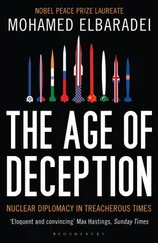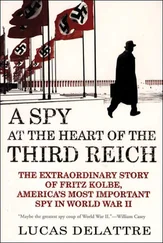A parallel part of the operation was the infiltration of a band of real anti-communist partisans [48] av It was part of an underground army comprising the remnants of the armed forces of the short-lived Ukrainian republic, anti-Bolshevik Russians based in Poland and others.
in Belarus by a talented Cheka officer called George ‘Grisha’ Syroyezhkin. Helped by two genuine gunshot wounds from Russian border guards, he succeeded in convincing the guerrillas and their foreign backers of his bona fides. He became firm friends with the émigré leader Boris Savinkov (one of Reilly’s co-conspirators) in the movement’s increasingly miserable Warsaw headquarters. (Poland had signed a peace treaty with Soviet Russia in March 1921, ending Polish support for a planned anti-Soviet uprising in the autumn). In July 1921 the Soviet secret police had rounded up much of Savinkov’s network inside Russia, using details provided by ‘Grisha’.
Dzerzhinsky was careful not to overplay his hand. He left enough embers of the anti-Bolshevik cause smouldering to allow him to play the next round in the game. Savinkov’s cause was doomed; it was now time to destroy him personally. Again a purported anti-communist organisation made contact, this time called the Trust. It purported to be democratic, not monarchist, in outlook: this was far more appealing to Savinkov, a radical liberal who detested Tsarist autocracy and communist totalitarianism in equal measure. After some elaborate bits of play-acting involving his emissaries, and the use of a femme fatale with whom Savinkov had begun an affair, the inspirational anti-communist leader was tempted across the Soviet border, arrested, and brought to Moscow. Skilful interrogation by Dzerzhinsky (who regarded physical torture as a crude and unworthy short-cut), eventually brought Savinkov’s cooperation in a show trial, after which he was given a light sentence and died in a mysterious fall from a window, possibly in suicidal despair, possibly murdered on Stalin’s orders.
The next victim was Reilly. He was no longer formally on the books of British intelligence: SIS records show a series of exasperated telegrams between London and its stations complaining of the masterspy’s adventurism. But Reilly retained friends in the service, including Ernest Boyce, his former boss from Moscow days and now the Tallinn station chief. In 1925, Boyce wrote to Reilly asking for his help in investigating what appeared to be a serious underground operation inside Russia. Again a Russian female agent played a central role: this time an attractive woman called Maria Zakharchenko-Shults, who was both sexually voracious and embittered by ill-treatment from her previous lovers. It is not clear whether Reilly became intimate with her, but she certainly exerted a strong influence on him after he arrived in Helsinki to make contact with the Trust’s leaders. The deception soon deepened, with plenty of supporting evidence of the underground movement’s capabilities. The brother of a local SIS agent, trapped in Russia, was smuggled out. He was a violinist, and needed his precious instrument to earn a livelihood. Obligingly, the Trust arranged that too. Carr was a little dubious: it all seemed too slick for a real bunch of plotters to manage under the noses of the increasingly all-powerful Russian secret police. Unfortunately, he stifled his doubts. 33
The plan was for Reilly to meet Trust leaders in Finland in September 1925. But at the last minute he was persuaded to come to Moscow for a meeting of the anti-communist ‘government-in-waiting’. As bait Maria also presented a newspaper cutting with a photo purportedly showing an emissary of the Trust, Terenty Deribas, whom Reilly had already met in Helsinki, standing next to Lenin. 34What better proof could there be of the organisation’s clout, if it had on board a former lieutenant of the Bolshevik leader? Unfortunately, the photo was a forgery. As a final incentive, Deribas mentioned the lucrative business deals Reilly would be able to do in Russia once the communists were out of the way. The mixture of sex, greed, ambition and adrenalin was irresistible. Reilly swallowed the bait, penned a hasty letter to one of his wives, and crossed the border.
His hosts did not arrest their quarry immediately. Instead, they pumped him for information in the guise of allies. Reilly duly revealed his cupidity, suggesting that the new government could be financed by selling treasures from Russia’s museums and art galleries: he even offered his own services as a broker in this sordid deal. At this point the deception ran into political trouble. Those running the operation thought it would be better to let Reilly return to the West. This was standard practice with other unsuspecting émigré supporters. Reilly’s account of a successful mission would boost the Trust’s credibility, allowing its puppet-masters to play still more games with the Western spy chiefs. But Stalin, by now the Soviet leader, wanted none of it. Even a phoney underground organisation was one too many. The British spy was arrested but gave little away. He probably did not have much to give: he was not on official SIS business, had never worked at its headquarters and his memories of service were several years out of date. He was shot on 5 November.
The ill-fated expedition was just a blip in the British intelligence build-up in the Baltic. As Russia became more isolated, the hunger for information about it grew. Money and men came piling in, with a resulting blizzard of unsatisfactory, confusing and ill-sourced information. 35Specialisations developed: military intelligence in Tallinn, naval in Helsinki, and political and economic in Riga. Kaunas was said to be rather dull in comparison. Yet enthusiasm was not matched by judgement. The British intelligence officers tended to be Anglo-Russians whose lives had been blighted by the revolution. They found Russian émigrés congenial company and recruited them as sources. This mirrors the same mistakes made by SIS in the years immediately after the war, when again under great pressure to produce results, and facing an all but impenetrable target, it relied on anti-communist refugees and insurgents. They too were ardent allies and willing risk-takers; but die-hard opponents of a regime are unlikely to know its secrets. Hatred uninformed by knowledge and fuelled by wishful thinking is about the worst possible basis for successful espionage. It was not until the late 1950s that SIS was to realise this and concentrate on meticulous recruitment and agent running inside the communist establishment.
Émigré and dissident groups always find it hard to vet new recruits effectively. Any publicly identifiable member becomes an easy target for bullying, blackmail or bribery. Once penetrated, such groups become an asset to their foes, not a threat. Only outfits with small memberships based on close personal friendships have a chance of escaping this fate. That was not the hallmark of the amateurish and feuding Russian diaspora in the 1920s and 1930s, or of the Baltic émigrés in the 1940s and 1950s. Add the extra unreliability caused by affiliation, real or imagined, with the secret world, and it is easy to see how Western intelligence services were ensnared in Bolshevik plots. As the official historian of SIS writes, ‘1920s Europe was full of dubious White Russian characters representing themselves as secret agents.’ 36They produced little intelligence of any significance 37but sometimes did real damage: asserting, for example, that the Soviet Union was fomenting insurrection in Ireland and India. Britain issued a thunderous protest, only to be embarrassed when a Soviet response proved that the intelligence, far from being drawn straight from the Politburo (as claimed) was entirely fabricated. SIS bosses complained, and vainly introduced new rules designed to prevent the service paying good money for forged documents. As the British purse strings tightened in the 1930s, many agents began diversifying their sources of income, particularly by offering their services to the Abwehr (German military intelligence).
Читать дальше












